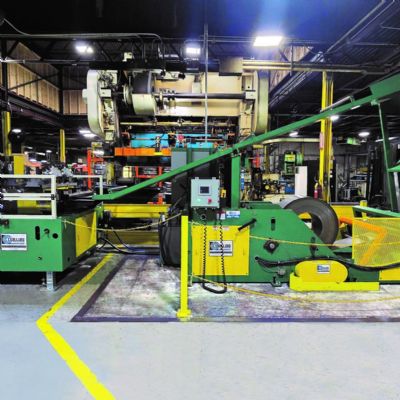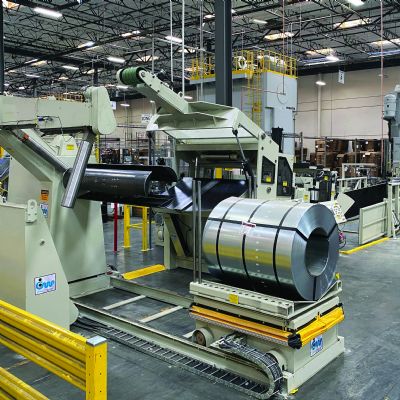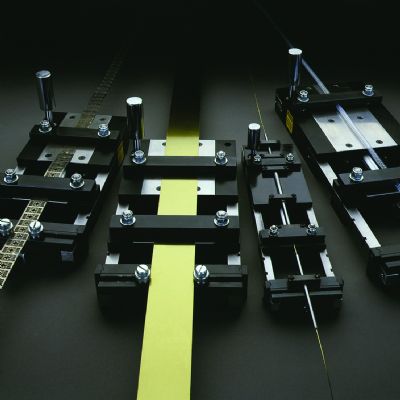Across the Floor
As fabricators move raw material to the shears and saws, then laser, waterjet and plasma cutting tables, and on to press brakes, punching machines or stamping presses, they look for efficient material movers to cut time and effort. The less time and effort spent moving materials and parts from one workstation to the next, the greater the uptime, productivity and profit.
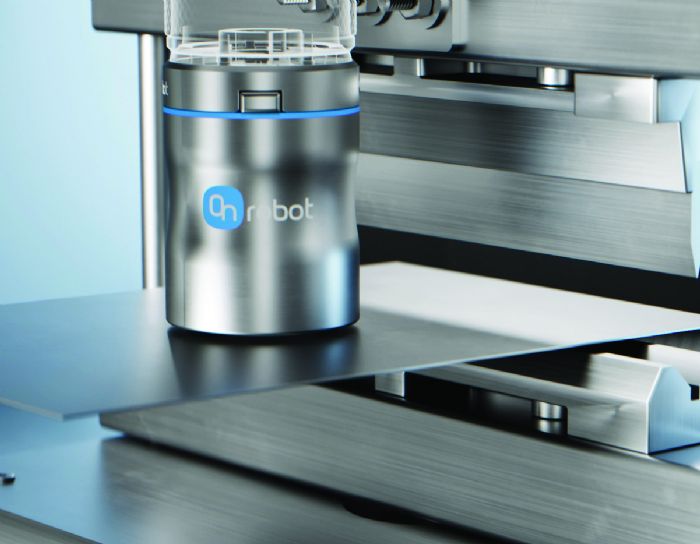 Hater, Industrial Magnetics. Air-actuated, permanent magnetic sheet-lifter systems move steel sheets from pallets to cutting tables, burn tables and other workstations safely, allowing workers to work reliably and without hesitation. Magnets are inherently safer than vacuum cups because they do not fail in the event of a power outage or loss of air. A fail-safe design is in place without a battery backup.
Hater, Industrial Magnetics. Air-actuated, permanent magnetic sheet-lifter systems move steel sheets from pallets to cutting tables, burn tables and other workstations safely, allowing workers to work reliably and without hesitation. Magnets are inherently safer than vacuum cups because they do not fail in the event of a power outage or loss of air. A fail-safe design is in place without a battery backup.
Rare-earth magnets hold parts during transfer. These are direct replacements for vacuum cups. Some models use air but significantly less air than a vacuum cup, operate in any orientation, and facilitate efficiency because they hold odd-shaped and perforated parts without requiring extra time to add clamps or straps.
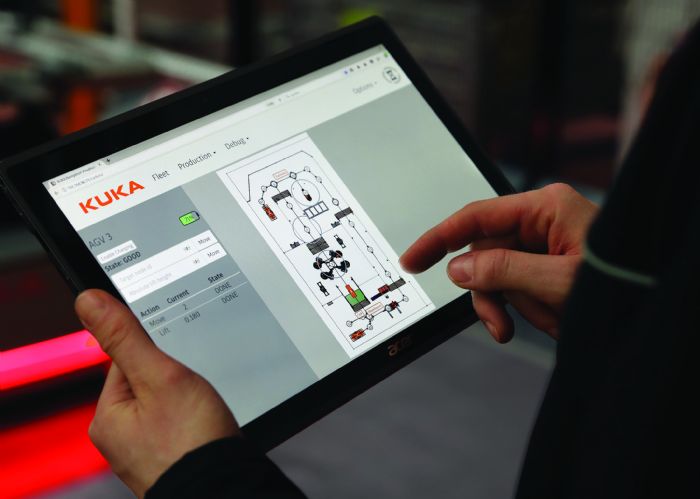 In addition, a cylinder-actuated transporter magnet is suitable where vacuum cups and grippers are typically used for lifting and moving steel sheets, stamped parts and complete assemblies. Manual and automated systems are available.
In addition, a cylinder-actuated transporter magnet is suitable where vacuum cups and grippers are typically used for lifting and moving steel sheets, stamped parts and complete assemblies. Manual and automated systems are available.
Adjustable magnet positions accommodate various sheet lengths and widths, and hoist integrations, helping decrease cycle time.
Kristian Hulgard, General Manager, Americas, OnRobot. We provide magnetic grippers suitable for picking steel materials from a stack, inline feed or mobile robot and feeding them to cutting machines, press brakes, punching machines, stamping presses, roll forming machines and other equipment as well as throughout fab shops. The magnetic gripper ensures safe and reliable operation by maintaining grip—even after power loss or emergency stop. And, they can be equipped with adjustable force and part detection, crucial to ensure that only one sheet is moved at a time, rather than multiple sheets. The magnetic gripper also comes with customizable fingers for moving cylindrical and irregular shaped parts.
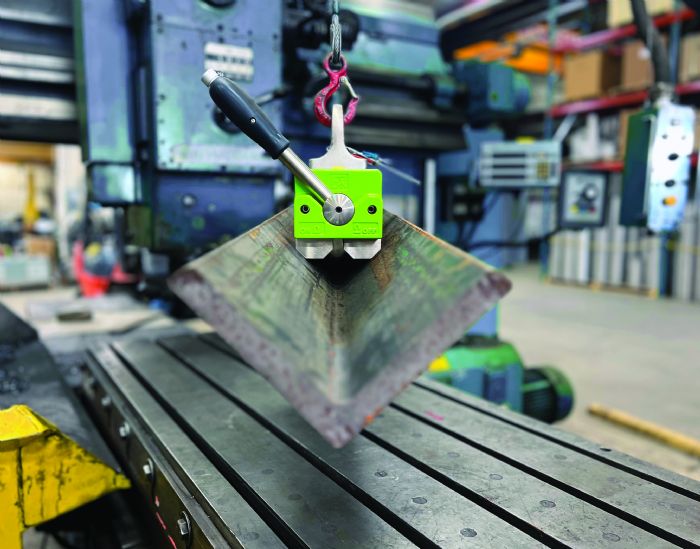 For handling nonmagnetic parts, customizable electric vacuum grippers provide a powerful and easy-to-deploy alternative.
For handling nonmagnetic parts, customizable electric vacuum grippers provide a powerful and easy-to-deploy alternative.
Stafford, Kuka. AMRs seamlessly transfer materials to the blanking, cutting and hole-making areas, and ensure swift access to the punching, press brake forming, stamping, welding and assembly areas. The AMRs’ integration with AI-driven fleet-management software optimizes routes; minimizes congestion; and enhances process and space optimization, and traceability. Because they are flexible, they contribute to increased flexibility in material flow and adapt to changing production demands, increasing efficiency and flexibility in manufacturing operations. Data collected during operations allow for continuous improvement and real-time monitoring of material movements.
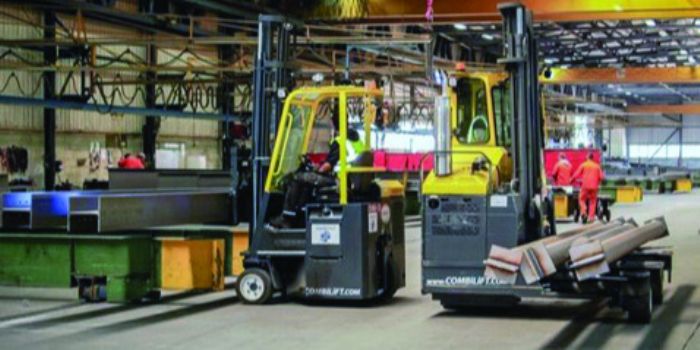 Kuka AMRs can be equipped with a collaborative-robot arm to render additional efficiencies.
Kuka AMRs can be equipped with a collaborative-robot arm to render additional efficiencies.
Short, Combilift. Using forklifts to move materials and parts between processes allows production staff in the vicinity to continue working, remaining productive in their workstations. There is no need for the staff to remove themselves from the load’s path, as is required when fabricators use a crane with traveling suspended loads. Lift trucks that allow fabricators to travel with the load on the load-bearing platform save a lot of time and effort.
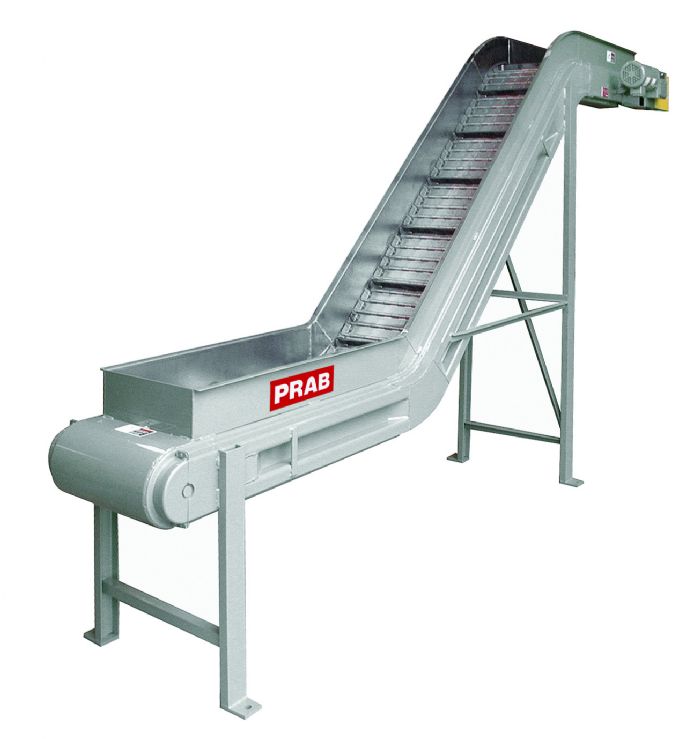 The multidirectional nature of some forklifts combines the advantages of a counterbalanced forklift, side loader and very narrow aisle truck in one vehicle. Because the forklift’s wheels can pivot 90 deg., one forklift can approach a load from one direction, capture the load and exit in another direction. These vehicles’ versatility reduces the number of forklifts needed and can nimbly and efficiently move loads through the plant.
The multidirectional nature of some forklifts combines the advantages of a counterbalanced forklift, side loader and very narrow aisle truck in one vehicle. Because the forklift’s wheels can pivot 90 deg., one forklift can approach a load from one direction, capture the load and exit in another direction. These vehicles’ versatility reduces the number of forklifts needed and can nimbly and efficiently move loads through the plant.
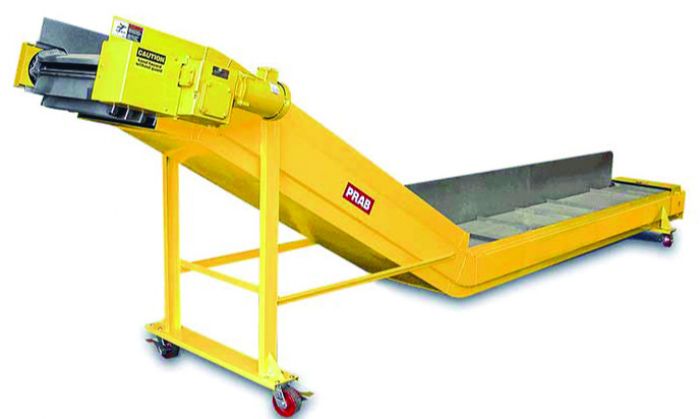 Bob Anspaugh, conveyor sales engineer, Prab: Steel-belt or drag conveyors transfer parts from one workstation to the next continuously. Sometimes space is limited, and only specific conveyors fit in those applications, thus it’s advisable to consult with the OEM in selecting the right one.
Bob Anspaugh, conveyor sales engineer, Prab: Steel-belt or drag conveyors transfer parts from one workstation to the next continuously. Sometimes space is limited, and only specific conveyors fit in those applications, thus it’s advisable to consult with the OEM in selecting the right one.
Moving Scrap Out
Anspaugh, Prab. Several different types of conveyors efficiently remove scrap metal from stamping presses, from a simple, single-unit conveyor sitting next to a press to large systems with multiple conveyors located in a pit under the plant floor.
Typically, the simple single-unit conveyor captures the scrap from the press discharge, propels it via a steel belt and elevates it into a container. This system facilitates efficiency because it eliminates having employees manually handle the scrap. For small, thin scrap, fabricators can use a pivot belt or magnetic conveyor. Both of these conveyors reduce or eliminate “carry-over”—scrap that does not discharge and gets stuck on a steel-belt conveyor. This reduces maintenance and downtime that sometimes occurs transporting thin scrap on steel-belt conveyors.
Large systems convey scrap from multiple presses via conveyors located in a pit below the plant floor. Conveyors in a pit facilitate efficiency because they free space for fork truck and foot traffic on the plant floor. A system such as this is equipped with a large oscillator in the pit that feeds scrap onto a steel-belt conveyor. The conveyor elevates the scrap, takes it outside of the plant and onto a shuttle conveyor, and then into a semi-truck trailer, ready for pickup or offsite transport.
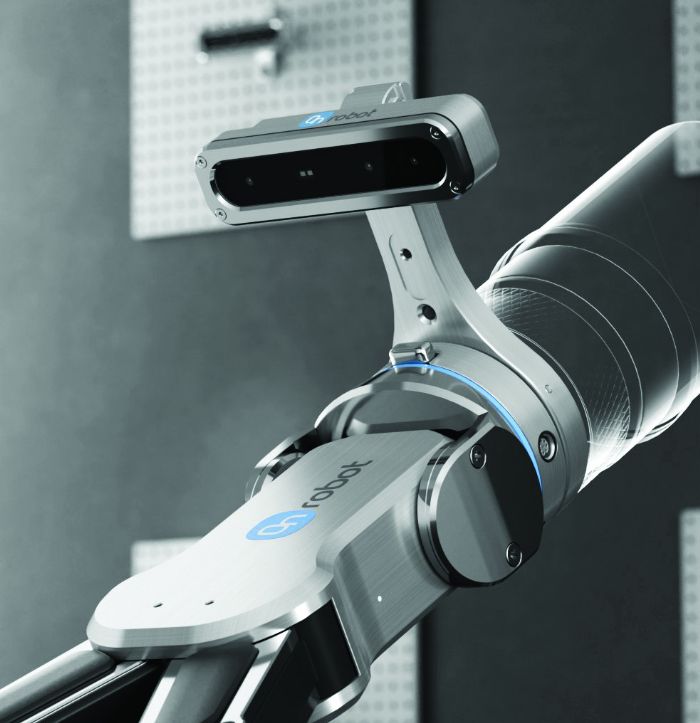 These systems’ scales weigh the trailers to keep them from overfilling and send text messages to scrap dealers to let them know when a full trailer must be picked up.
These systems’ scales weigh the trailers to keep them from overfilling and send text messages to scrap dealers to let them know when a full trailer must be picked up.
Industry 4.0 facilitates ways to monitor the conveyor system 24/7 using heat and vibration sensors. Monitoring can be accessed remotely to make sure that everything runs as it should and alert users to potential failures before they occur.
Fabricators can add controls that interlock with the press, so that when the press starts, it automatically starts the conveyor system. Controls with PLC/HMI can show each conveyor and its status—whether it’s running or halted by a fault.
All conveyors need some level of maintenance and one big one is to adjust the belt take-ups. A conveyor system can be equipped with automatic take-ups that do not require any hands-on maintenance to keep the conveyor belt at the proper tension, saving time.
Over to Welding and Assembly
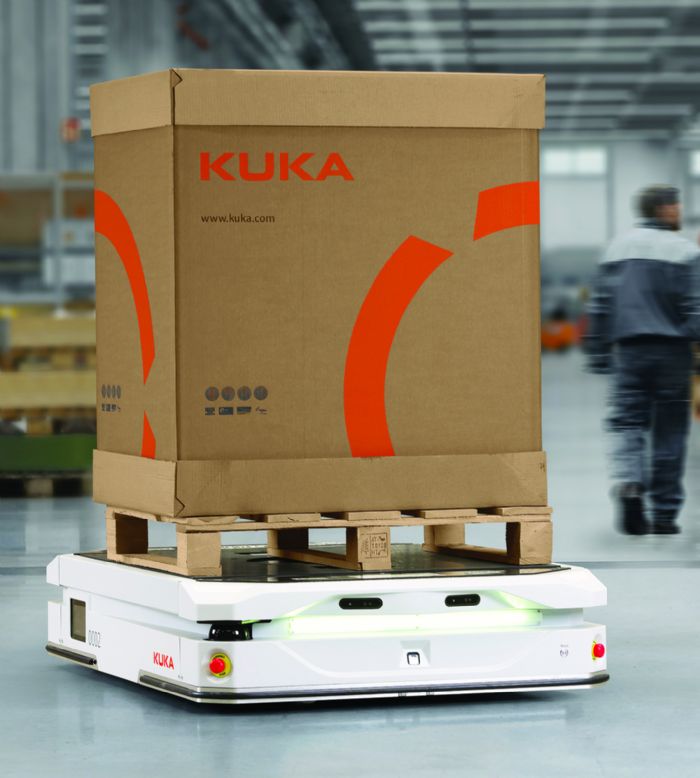 Hater, Industrial Magnetics. A certain permanent lifting magnet for flat and round parts is heat-resistant to 180 F, suitable for hot-part handling in the welding area. It has 100% strength to 302 F, 50% to 392 F and 33% to 482 F.
Hater, Industrial Magnetics. A certain permanent lifting magnet for flat and round parts is heat-resistant to 180 F, suitable for hot-part handling in the welding area. It has 100% strength to 302 F, 50% to 392 F and 33% to 482 F.
Magnets offer safe, steady and effective fixturing during welding and fastening operations.
Hulgard, OnRobot. Magnetic grippers, lifting and moving systems are suitable for picking metal materials from a stack, inline feed or mobile robot and feeding them to welding and fastening stations.
... to In-Plant Powder Coat, Wet Paint or Plating
Hater, Industrial Magnetics. Fabricators can access several non-marring options on magnetic movers to protect finished surfaces. These options include, but are not limited to, urethane boots, magnet covers, soft belting and tear-away cellophane. Some models use rare-earth magnets to hold parts during transfer. A urethane boot increases the grip on the part. The low-skid boot/pad protects against part marring/damage.
Hulgard, OnRobot. Magnetic grippers prove ideal for picking metal parts from a bin or mobile robot and feeding them to—and from—coating, painting and plating stations without scratching or marring the coated surfaces.
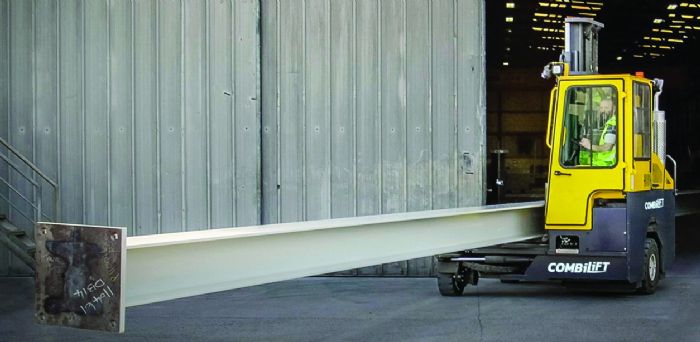 Stafford, Kuka. Mobile robots’ integration with coating equipment reduces the risk of defects and rework, enhancing efficiency and product quality.
Stafford, Kuka. Mobile robots’ integration with coating equipment reduces the risk of defects and rework, enhancing efficiency and product quality.
Short, Combilift. Moving parts with single points of contact rather than slung on a chain eliminates damage of painted fabrications and subsequent rework.
... to Inspection, Quality Control
Stafford, Kuka. Mobile robots and AGVs expedite material transport to the part-inspection station without human involvement, minimizing delays and ensuring timely quality control. Their role in automating material-transport tasks allows workers to focus on process refinement and innovation. Mobile robots’ integration with AI-driven fleet-management software enables proactive decision making, optimizing material flow and resource allocation.
Hulgard, OnRobot. Again, a magnetic gripper picks metal parts and feeds them to inspection stations. From there, metal formers can employ a vision camera, engineered for inspection tasks, which provides depth perception for varying heights or stacked objects and comes with one-shot calibration, which reduces setup time.
Hater, Industrial Magnetics. Magnets operate effectively in any orientation and can flip and rotate parts on all three axes to perform a 3D inspection, saving time.
Stafford, Kuka. Mobile robots’ integration with inspection equipment enables real-time quality monitoring and analysis, enhancing process optimization and traceability. Moreover, their role in automating material-transport tasks improves workplace safety and accessibility.
And, Finally, to Packaging/Shipping
Hulgard, OnRobot. Our palletizer is a complete, configurable and modular collaborative palletizing system that automatically optimizes robot motion to reduce cycle time and extend equipment life. It is compatible with all leading robot arms, ensuring fast deployment. Moreover, it is supported by OnRobot D:Ploy, reportedly the industry’s first automated platform for building, running, monitoring and redeploying collaborative applications with zero programming and zero simulations.
Stafford, Kuka. Mobile robots optimize logistics processes by automating material-transport tasks to packaging and shipping areas, ensuring timely delivery of finished products. Their integration with packaging equipment improves packaging quality and reduces shipping errors. Additionally, they can be used for streamlining material flow and resource allocation.
Short, Combilift. Loads can be built at ground level with certain forklifts more efficiently and safely than building a load on a trailer. This eliminates working at height, reduces multiple touches of painted beams and stores them efficiently. MF
View Glossary of Metalforming Terms
See also: Industrial Magnetics, Inc., PRAB, Inc., Combilift Ltd., KUKA Robotics Corp., OnRobot US, Inc.
Technologies: Coil and Sheet Handling, Management, Pressroom Automation







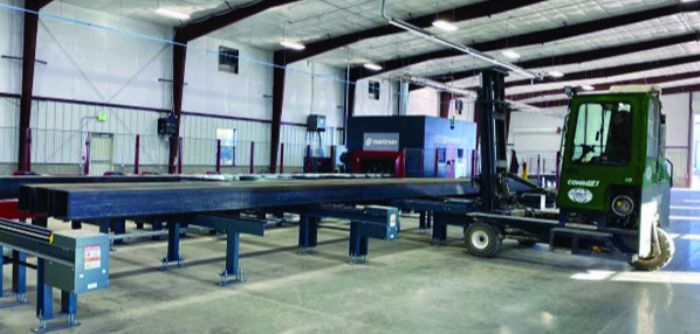 Assuming an optimal layout, with workstations arranged so that each piece being manufactured can be moved from one station to the next, which material-handling equipment promotes efficiency? How do specific types of material movers reduce bottlenecks and move the process along without delaying or disrupting production?
Assuming an optimal layout, with workstations arranged so that each piece being manufactured can be moved from one station to the next, which material-handling equipment promotes efficiency? How do specific types of material movers reduce bottlenecks and move the process along without delaying or disrupting production?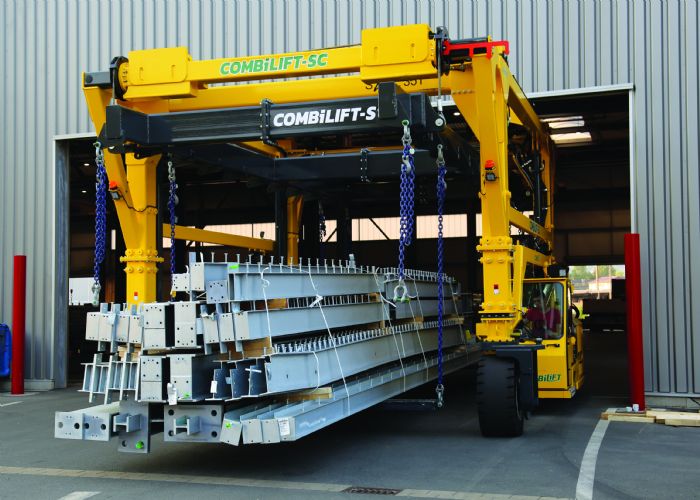 Spokespersons for Industrial Magnetics, Combilift, Prab, OnRobot and Kuka Robotics offer their spins on efficiently moving raw material, parts and scrap through a fab shop via magnetic lifters, forklifts, conveyors, automated guided vehicles (AGVs) and autonomous mobile robots (AMRs).
Spokespersons for Industrial Magnetics, Combilift, Prab, OnRobot and Kuka Robotics offer their spins on efficiently moving raw material, parts and scrap through a fab shop via magnetic lifters, forklifts, conveyors, automated guided vehicles (AGVs) and autonomous mobile robots (AMRs). 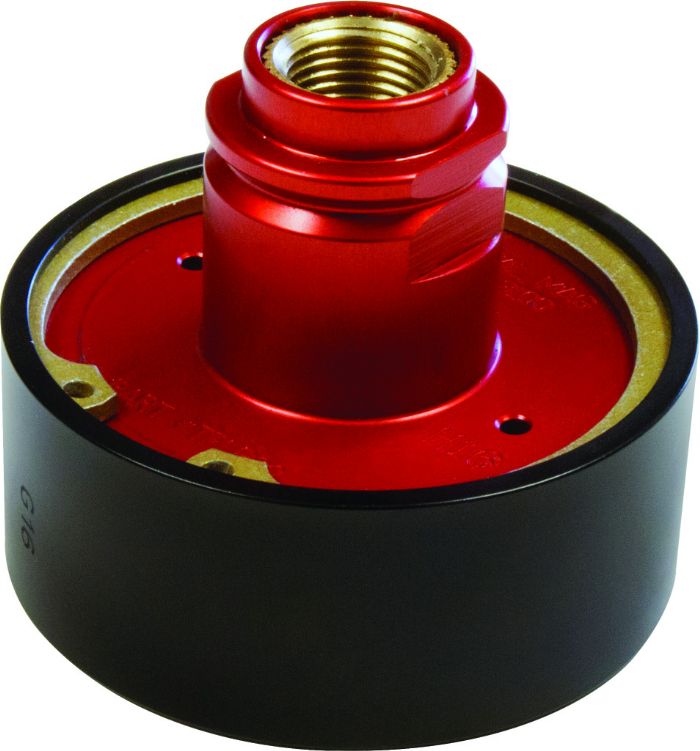 Denise Stafford, business development manager, Kuka Robotics. AMRs transport raw materials from the dock door to storage areas, ensuring efficiency through precise handling that minimizes damage risks. Using AI-driven fleet-management software, fabricators can jumpstart traceability right from the dock door, thereby realizing tracking efficiency.
Denise Stafford, business development manager, Kuka Robotics. AMRs transport raw materials from the dock door to storage areas, ensuring efficiency through precise handling that minimizes damage risks. Using AI-driven fleet-management software, fabricators can jumpstart traceability right from the dock door, thereby realizing tracking efficiency. 